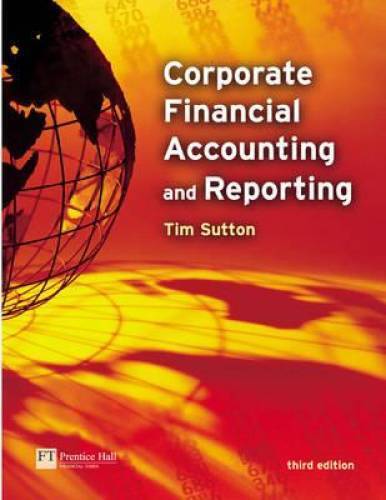Accounting for employee share options Shareholders in Sif, a cosmetics company specialising in hair care products, agree
Question:
Accounting for employee share options Shareholders in Sif, a cosmetics company specialising in hair care products, agree to the establishment of a share option plan for employees at a general meeting in early x2. Up to 1.6 million A5 par shares may be issued under the plan.
The first tranche of 234,000 options (on an equivalent number of shares) is granted in early x2. The term of the options is ten years: it begins on the date of grant. Options may not be exercised before the end of a two-year period which begins on the day following the date of grant. This period is followed by an eight-year exercise period. The exercise price of the options granted in x2 is A25, equivalent to the average market price of Sif’s shares on the 20 trading days prior to the issuance of the options.
The fair value of the options at that date, based on the Black–Scholes option pricing model, is A10.5.
In early x4, 200,000 options are exercised when the market price of the shares is A31. The remaining 34,000 options lapsed in x3 because the employees left the company that year.
Required
(a) Assume Sif measures the cost of its employee share options at intrinsic value.
(i) What is the compensation expense the company recognises in x2 with respect to the options granted that year?
(ii) Show the entry the company makes to record the exercise in x4 of the options granted in x2.
(b) Repeat (a), assuming Sif measures the cost of its ESOs at fair value.
(c) A Sif manager wonders whether it’s possible for the company to avoid recording compensation expense by hedging the exercise of the options. ‘Suppose the company had bought back 234,000 of its shares at the time the options were granted in x2 and paid the market price then (A25) for them. The entry would have been:
524 PART 2 • THE HOUSE OF ACCOUNTING Dr. Treasury shares (OE−) A5,850,000 Cr. Cash (A−) A5,850,000 When the options are exercised, we reverse the above entry. Lots of companies do this. By buying back the shares at what is the exercise price, the company avoids having to buy them at a higher price later and incurring a loss as a result.’
Comment on the manager’s idea. Can the company avoid recording compensation expense by buying back shares equivalent to the options granted? If not, why not?
AppenedixLO1
Step by Step Answer:






